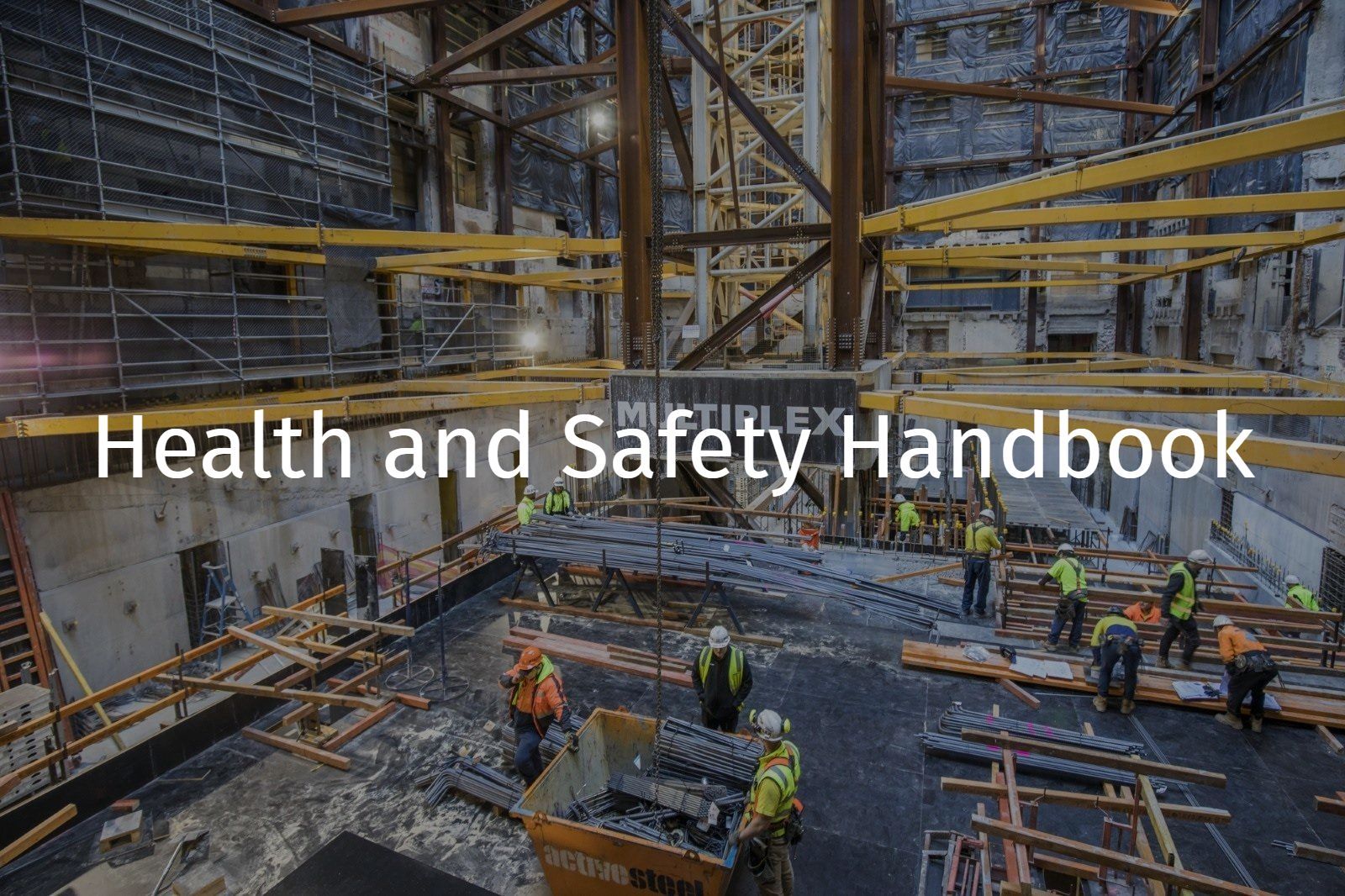Psychosocial Health
Psychosocial Health
Potential hazards include, but are not limited to:
- Lack of role clarity
- Low job control
- High, low or conflicting job demands
- Time Pressure and Role Overload
- Physically Demanding Work
- Challenging Work Hours or Shift Work
- Poor management / supervisor support
- Harmful workplace behaviour
- Inappropriate and unreasonable behaviour incl. bullying, aggression, harassment, discrimination
- Poor organisational change consultation and management
- Inadequate recognition and/or reward
- Poor physical environmental conditions
- Remote or isolated work
- Exposure to traumatic events or material
- Violent or traumatic events
- Poor organisational justice
- Inequity, inequality, bias and exclusion
- Family and domestic violence
References
- Internal Controls Framework
- Integrated Operational Procedures
- Psychosocial Management Plan
- WHS Management Plan
- Emergency Management Plan
- Code of Business Conduct and Ethics
- Appropriate Workplace Behaviour Policy
- Workplace Bullying Policy
- Brookfield Positive Work Environment Policy
- Health, Safety, Environmental and Quality Policy
- Flexibility Guidelines
- Diversity and Inclusion Policy
- Parental Leave and Support Policy
- Family & Domestic Violence Policy
- Enterprise Agreement
- Gender Equality Strategy
- Employee Assistance Program
- Transitioning well coaching program
- Employee Toolkit for New Parents
- Manager Toolkit for New Parents
- Competency Framework
- Performance management program
- Planning and Programming Procedures
Definitions
Psychosocial hazards - are hazards that arise from or relate to, the design or management of work, a working environment, plant at a workplace or workplace interactions or behaviours and may cause psychological harm, whether or not it may also cause physical harm. Psychosocial risk - is a risk to the health or safety of a worker or other person arising from a psychosocial hazard.
Psychosocial safety refers to how well a workplace supports mental health and wellbeing. It includes feeling safe to speak up, being treated with respect, having manageable work demands, and receiving support from leaders and colleagues. A psychologically safe environment empowers people to raise concerns, ask for help, and contribute ideas without fear of negative consequences.
Perinatal – is the period of time when you become pregnant and up to a year after giving birth.
Leadership and Worker Participation
Leadership and Commitment
- Multiplex senior managers at all levels demonstrate visible commitment to managing psychosocial risks, through active awareness as well as participation, continuous monitoring and improvement of related systems
- Management fosters an open culture that encourages effective communication between the workforce and management.
- Policies covering health and safety, fitness for work, workplace behaviour, workplace bullying, diversity and inclusion, parental leave, injury management and rehabilitation, and family & domestic violence are established, communicated and reviewed periodically.
- Clear expectations of all Multiplex workers are established through the Code of Business Conduct and Ethics (the Code) , and processes are implemented for annual recertification of understanding and compliance.
- An employee assistance program and well-being offerings (through a wellbeing platform) are provided to all Multiplex workers and their families.
- Trained Mental Health First Aiders are accessible across all projects.
- Coaching and support programs is provided for Multiplex employee’s parents transitioning to parenthood.
- Participation in industry research, such as the Perinatal Workplace Wellbeing Program (PWWP), is undertaken to promote and protect the mental health and well-being of new and expectant parents.
- Diversity and inclusion strategies are implemented to promote gender equality and underrepresented groups.
Roles, Responsibilities, and Authorities
- Roles, responsibilities, authorities, and accountabilities of Multiplex workers are clearly defined in position descriptions and management system documentation to support role clarity across all levels of the organisation.
- Tasks are assigned in alignment with clearly defined position descriptions and are further informed by each workers knowledge, skills, and experience with assignments regularly reviewed.
- Management structures and reporting lines are maintained in corporate and project organisational structures / charts.
- As a PCBU, subcontractors are responsible and accountable for managing their psychosocial hazards and risks.
Consultation and Communication
- Consultative arrangements are inclusive, ongoing, and responsive, enabling workers, subcontractors, and stakeholders to contribute to health and safety decision-making including matters relating to psychosocial hazards and risks. While MPX retains ultimate decision-making authority, consultation with relevant parties is undertaken to inform those decisions and continuously improve the processes for managing psychosocial risk
- Multiplex workers are encouraged to discuss (through regular Manger and Employee time) and consulted (through a team based approach) regarding their potential needs regarding flexible working requirements including arrangement around varied site rosters (e.g., “flex days" and rotating Saturdays), early/late start and finish times, job redesign, and working remotely This is also considered from the view of what works best with and supports the team. This consultation is balanced with business needs and policies.
- Collaborative working relationships and open communication channels are maintained with subcontractors and stakeholders, ensuring they are kept informed of our planning and delivery processes through invitations to planning meetings, team meetings, peer review processes, pre-planning groups, high-risk workshops, and design workshops.
- Health and Safety Committees (involving Health and Safety Representatives) and human resources (HR) forums are established and empowered to consult on psychosocial hazards and risks and to advise and educate the business in this area. Information on psychosocial hazards, risks and controls are communicated through a range of mechanisms which may include meetings, reports, alerts, presentations, emails , formal communication software (i.e. Aconex), training, inductions, website, intranet, , and newsletters.
- Responsibilities for implementing and communicating changes are clearly allocated through documented procedures.
Planning
Risk Identification and Assessment
- Psychosocial risks and are identified and assessed through a combination of formal and informal processes, including surveys, employee feedback mechanisms, performance reviews, business planning workshops, strategy planning, consultation with workers, contractors and clients, meetings and project risk workshops.
- General psychosocial hazards and their control measures are outlined in this procedure. Where other specific risks are identified, control measures are recorded in the risk register unless recording them would breach confidentiality.
Resource Planning
- Resources, and skills are planned from tender or ECI phase place the right people on the right roles, leveraging the data maintained in HR systems such as Workday. Resource levels are determined based on project complexity, programme intensity, scope, and hours of operation (e.g., single shift vs. multiple shifts).
- Appropriate levels of supervision and support ais provided to all workers.
- Worker absences, including those related to flexibility and leave, are planned and managed.
Construction Programmes
- Construction programmes are developed, communicated, and regularly reviewed in accordance with the Planning and Programming Procedures
- Regular monitoring and review of construction programmes is undertaken to support the early identification and management of emerging psychosocial risks.
Competence and Training
- A role based competency framework as part of the performance and development planning process is established that provides a reference tool that workers and managers may use to identify their development areas against both technical and leadership competencies
- A performance management program is provided that includes annual performance agreements, goal-setting discussions (including development goals), mid-year and end-of-year reviews and regular feedback channels (through regular manager – employee time, ME time).
- Manager and employee training is provided to support effective career conversations and development planning.
- A comprehensive talent management approach is implemented to equip and empower Multiplex employees by regularly reviewing their performance and potential, taking talent management actions, evolving the organisational culture, and attracting, developing, and retaining top talent.
- Learning and development programs and systems are provided via the Multiplex Academy to support Multiplex workers in acquiring and maintaining the necessary competence.
- Competency requirements for roles are clearly defined and regularly reviewed to ensure alignment with evolving project demands, industry standards, and regulatory requirements.
Operations
Workplace Environment and Equipment
- The design and layout of physical workplace features are provided and maintained to protect workers from hazards (e.g., noise, lighting, vibration, temperature, chemicals).
- Appropriate equipment for performing work tasks (e.g., manual handling equipment) is provided, maintained, and improved where necessary along with providing and requiring the appropriate and effective use of personal protective equipment.
Procurement and Contracting
- Contractors including subcontractors, suppliers, and consultants are selected and appointed following established procedures for Contractor Management, Tendering Subcontracts, and Letting of Agreements which includes:
- Contractor evaluation prior to contractual arrangements being established, considering the capacity to deliver projects of similar complexity and size and current resources to service the project scope
- Structured interviews and/or workshops being conducted throughout the tender period to clarify the contract scope, exclusions, qualifications, and resources.
- Detailed scope of work being developed for contractors that outlines clearly what is required of them.
- Standards of business conduct are being established through the relevant deeds, subcontract agreements and/or industrial instruments.
- Performance of subcontractors and their compliance with the obligations specified in their subcontract agreements are monitored and reported.
NSW, QLD - Subcontractors should submit documented procedures for managing psychosocial hazards to Multiplex prior to commencement of work, demonstrating their capability to identify, assess, and control psychosocial risks in accordance with regulatory requirements.
Incidents
- Workers can report psychosocial incidents (such as bullying, harassment, or work-related stressors) through multiple channels including:
- Informal or interpersonal channels: speaking with supervisors, managers, Human Resources, Health and Safety Representatives (HSRs), H&S Committees or union representatives.
- Formal processes: Incident reporting systems
- Anonymous reporting: via an independent third-party provider
- Online: Ethics Point Reporting Website
- Hotline: 1800-152-863 (Free & available 24/7)
- Upon receipt of a psychosocial incident report involving Multiplex workers including complaints of inappropriate workplace behaviour such as bullying, harassment, aggression, or sexual harassment, Multiplex will, depending on the nature and severity of the incident:
- Engage relevant internal resources including management, Human Resources, Health and Safety Representatives, and other support personnel to facilitate a timely and effective response.
- Conduct a timely, objective, and fair investigation proportionate to the seriousness and complexity of the issue.
- Provide confidential support and information to affected persons throughout the process, including access to the Employee Assistance Program (EAP) for Multiplex employees,
- Communicate outcomes transparently while respecting confidentiality.
- Record and report incidents as required by WHS legislation, including notifying regulators of notifiable incidents in a timely manner.
- When a psychosocial incident involves workers of a subcontractor who is also a PCBU, Multiplex will:
- Promptly notify the relevant subcontractor PCBU of the incident to ensure they are fully informed.
- Recognise that the subcontractor retains primary responsibility for managing the psychosocial incident involving their workers. This includes conducting investigations, providing support, implementing control measures, and complying with legislative and regulatory obligations.
- All information relating to psychosocial incidents is handled confidentially and in accordance with privacy laws. Limited disclosure of information may occur where necessary to protect health and safety or to meet WHS reporting requirements.
- Psychosocial issues and disputes are addressed through a consultative and supportive framework involving appropriate internal resources such as management, Human Resources, and other relevant support roles are engaged based on the nature and severity of the issue. Where resolution cannot be achieved internally, and following appropriate review, consultation, and escalation steps, matters may be referred to the relevant external authority in line with applicable WHS legislation and Codes of Practice. The decision to escalate is typically made by a senior management, in consultation with relevant stakeholders.
- Information about reporting processes, investigation outcomes, and available support is provided to workers.
Emergency Preparedness and Response
- Procedures for responding to mental health crises or psychiatric emergencies are maintained and regularly reviewed. Refer to the Emergency Management Plan for specific guidance on managing these situations.
- Appropriate specialists (e.g., mental health professionals, counsellors) are engaged where required to respond to emergency and crisis situations to manage psychosocial risks and provide support as necessary. Refer to Crisis Management Plan.
- Communication channels and support systems are in place to ensure timely assistance and ongoing care for workers affected by psychiatric emergencies.
- All emergency responses related to psychosocial risks are conducted with confidentiality, sensitivity, and respect.
Performance Evaluation
Multiplex Workforce
- Effectiveness of psychosocial risk controls is evaluated through :
- Employee Experience Surveys, Exit Interviews, Pulse Check Surveys,
- Incident reviews where applicable
- Meetings
- Performance evaluations and development planning,
- Talent, and succession planning processes
- 360-degree feedback surveys for leadership roles
- Insights from third-party providers like Employee Assistance Program, Outplacement, and Health Check providers.
- Participation in recognition and engagement initiatives, such as team-building activities, milestone celebrations, and other programs
Subcontractors and Consultants
- Effectiveness of controls relating to psychosocial hazards and risk (i.e. work planning, logistics, work hours, resourcing) is managed through regular coordination and site meetings.
Legal and Other Requirements
NSW
- Work Health and Safety Regulation 2017
- Code of Practice for Managing psychosocial hazards at work 2021
- Work Health and Safety Amendment Regulation 2022
ACT
- Work Health and Safety Regulation 2011
- Work Health and Safety (How to Manage Work Health and Safety Risks Code of Practice) 2011Work Health and Safety (Managing Psychosocial Hazards at Work) Code of Practice Approval 2023
Victoria
- Occupational Health and Safety (OHS) Act 2004
- Proposed OHS Amendment (Psychological Health) Regulations
South Australia
- Work Health and Safety (Psychosocial Risks) Amendment Regulations 2023.
- ·How to manage work health and safety risks - Code of Practice 2012
Western Australia
- Work Health and Safety (General) Regulations 2022
- Mental Health Amendment Regulations (No. 2) 2022
- Code of Practice - Psychosocial hazards in the workplace 2022
- Code of Practice - Violence and aggression at work 2022
- Code of Practice - Workplace behaviour 2022
Queensland
- Work Health and Safety (Psychological Risks) Amendment Regulation 2022
- Code of Practice – Managing the risk of psychosocial hazards at work 2022
- Work Health and Safety Regulation 2011 - Sexual Harassment Prevention Plan Requirement 2025Australia
- Model Code of Practice on managing psychosocial hazards at work (Code of Practice).
- ISO 45003: International standard for managing psychosocial risk at work
- Fair Work Act 2009 (Cth)
- Australian Human Rights Commission Act 1986 (Cth)
- Sex Discrimination Act 1984 (Cth)
- Workplace Gender Equality Act 2012 (Cth)
- Privacy Act 1988
Document Control
Version 1 - June 2023 – New Standard
Version 2 - November 2025 – Revised to incorporate additional hazards and requirements for planning, programs, subcontractor management, incident management, reporting and legal requirements







